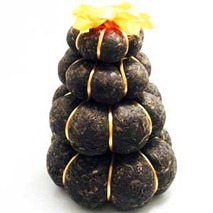| Image |
Common name |
Description |
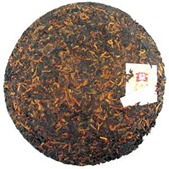 |
Bing, Beeng, Cake, or Disc
Chinese
饼茶
餅茶
Bǐngchá
|
A round, flat, disc or hockey puck-shaped tea. Size ranges from as small as 100g to as large as 5 kg or more, with 357g, 400g, and 500g being the most common. Depending on the pressing method, the edge of the disk can be rounded or perpendicular.
Also commonly known as Qīzí bǐngchá (七子餅茶, literally "Seven units cake tea") because seven of the bing are packaged together at a time for sale or transport.
|
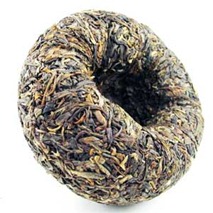 |
Tuo Cha, Bowl, or Nest
沱茶
沱茶
Tuóchá
|
A convex knob-shaped tea with size ranging from 3g to 3 kg or more, with 100g, 250g, 500g being the most common. The name for "tuocha" is believed to have originated from the round, top-like shape of the pressed tea or from the old tea shipping and trading route of the Tuojiang River.
In ancient times, tuocha cakes may have had holes punched through the center so that they could be tied together on a rope for easy transport.
|
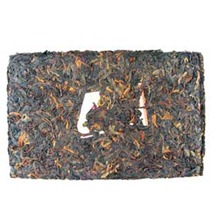 |
Brick
砖茶
磚茶
Zhuānchá
|
A thick rectangular block of tea, usually in 100g, 250g, 500g, and 1000g sizes.
Zhuancha bricks are the traditional shape that was used for ease of transport along the Ancient tea route by horse caravans.
|
 |
Square
方茶
方茶
Fāngchá
|
A flat square of tea, usually in 100g or 200g sizes. They often contain words that are pressed into the square.
|
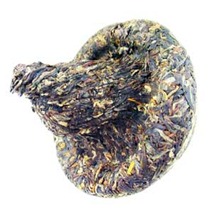 |
Mushroom
紧茶
緊茶
Jǐnchá
|
Literally meaning "tight tea," the tea is shaped much like túocha, but with a stem rather than a convex hollow. This makes them quite similar in form to a mushroom. Pu-erh tea of this shape is generally produced for Tibetan consumption, and is usually 250g or 300g.
|
|
|
Melon, or Gold melon
金瓜
金瓜
Jīnguā
|
A shape similar to tuóchá, but larger in size with a much thicker body that is decorated with pumpkin-like "stripes". This shape was created for the famous "Tribute tea" (貢茶) that was made expressly for the Qing Dynasty Emperorsfrom the best tea leaves of Yiwu Mountain. Larger specimens of this shape are sometimes called "Human-head tea" (人頭茶) due in part to its size and shape, as well as the fact that in the past it was often presented in court in a similar manner to severed heads of enemies or criminals.
|
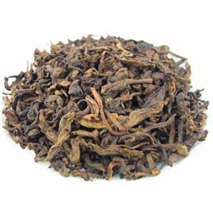 |
Loose Leaf
散茶
散茶
San Cha
|
Maocha that is aged uncompressed and sold at its maturity as aged loose-leaf raw pu-erh.
|
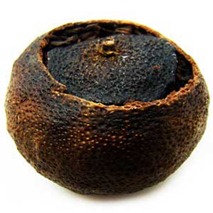 |
Packed Tangerine Peel. Ju Pu
橘普
橘普
Ju Pu
|
Pu-erh leaves stuffed into a whole Tangerine Peel. The leaves are packed into the fruit wet, and then dried under the sunlight.
After that, the packed tangerine teas are then stored in a cool dry location, allowing the tea to ferment and dry within the tangerine peel.
While drying the pu-erh tea absorb the flavor of tangerine.
|
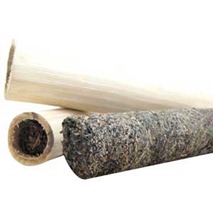 |
Tong Cha. Packed in Bamboo Tube.
筒茶
筒茶
Tong Cha
|
Raw tea leaves have been forced down in the the open end of the aromatic bamboo section, then bamboo sections are barbecued in a wood fire. As the bamboo dries in the fire the special aroma intermingles with the Pu-erh inside.
|







